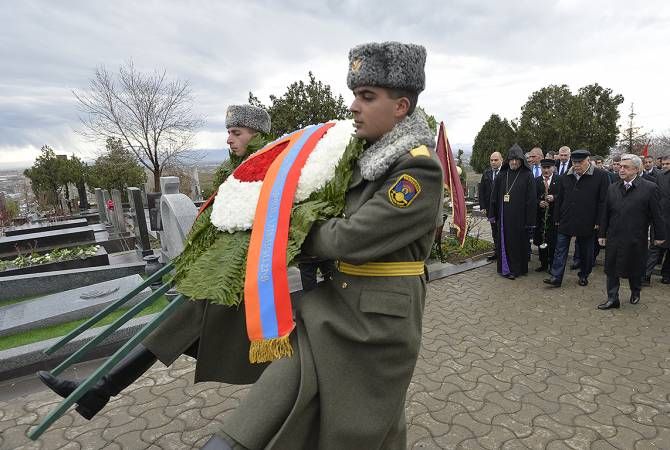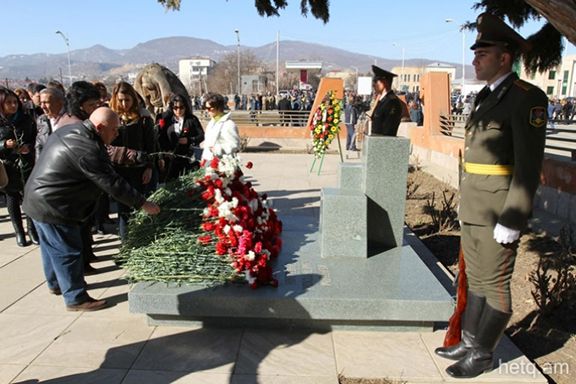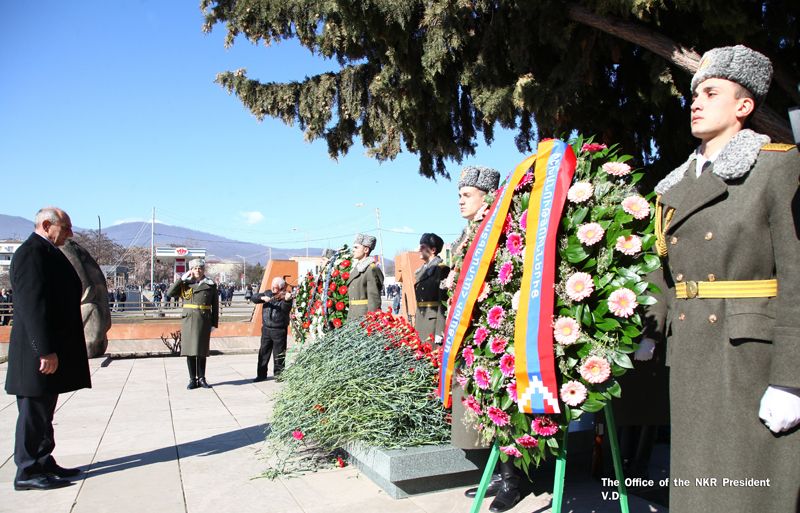Sumgait Continues to Serve As a Blueprint for Baku’s Savagery

Warning: This post contains graphic images
BY ARA KHACHATOURIAN
In 1988, it was unimaginable that in the latter days of the 20th century Armenians would experience the same savage carnage that their ancestors witnessed during the early days of the same century. The graphic images emerging from Sumgait, Azerbaijan 30 years ago were starkly reminiscent of familiar photographs we had seen from the Armenian Genocide. The eyewitness accounts of the pogroms committed by the Azerbaijani OMON forces against the Armenian population living in Sumgait were eerily similar to accounts we had heard throughout our lives from our grandparents who witnessed the Genocide and other survivor accounts.
They came at night with lists in their hands of Armenian residences and barged in, dragging half-dressed men, women, children and elderly onto the street where they met their violent and tragic end. Women and girls—some who were pregnant at the time—were raped before being slaughtered; men were set on fire; and some had their throats slashed. Streets were filled with panicking Armenians fleeing, marching through alleys and roads to find an escape route. Most didn’t survive.
We saw this scenario repeat itself later, in October 1988 in Kirovabad and in January 1990 in Baku. We would see the same bloodthirsty barbarism in Maraga, Shahumian and Getashen… We saw it in April of 2016 in Talish and Mardakert.

Yet Azerbaijan—whether under Soviet rule, or being governed by opponents of the current regime, or the Aliyevs themselves—seems to stick to the same playbook when it comes to Armenians.
After all, why shouldn’t they? Their Turkic cousins employed the same tactics more than a century ago and have not been unpunished.
The Sumgait pogrom, which can be deemed as the symbol of Baku’s continued savagery was a direct response to the people of Artsakh’s desire to exercise their right to self-determination. A week earlier, hundreds of thousands of peaceful demonstrators took to the streets of Stepanakert and Armenia calling for the reunification of Artsakh with Armenia—a historical prerogative.
Three decades later, this latest manifestation of Turkic hatred toward Armenians is still unpunished, and, as is the case with the Armenian Genocide, the silence of the international community regarding these abhorrent violations of human rights continues to green-light similar killings around the world.

What is more infuriating and puzzling is that these barbaric episodes that have been part and parcel of the Artsakh Liberation Movement are not included in the current discussion by international mediators who are working to find a resolution to the conflict. In fact, just the opposite is happening: the OSCE Minsk Group Co-chairing countries are using every opportunity to declare false parities giving Baku the leeway to continue its aggression. How else would one explain Aliyev’s audacity to declare that Azerbaijan will reclaim Yerevan as part of its historic land?
Some might say three decades too late, but the 30th anniversary of Sumgait must propel the Armenian government and the Armenian people to demand justice for these viscous crimes, because, first and foremost, the survivors deserve closure, but more important, although Artsakh emerged victorious in the war, the Sumgait remains a blueprint and enables Baku to advance its murderous rampage with impunity.









